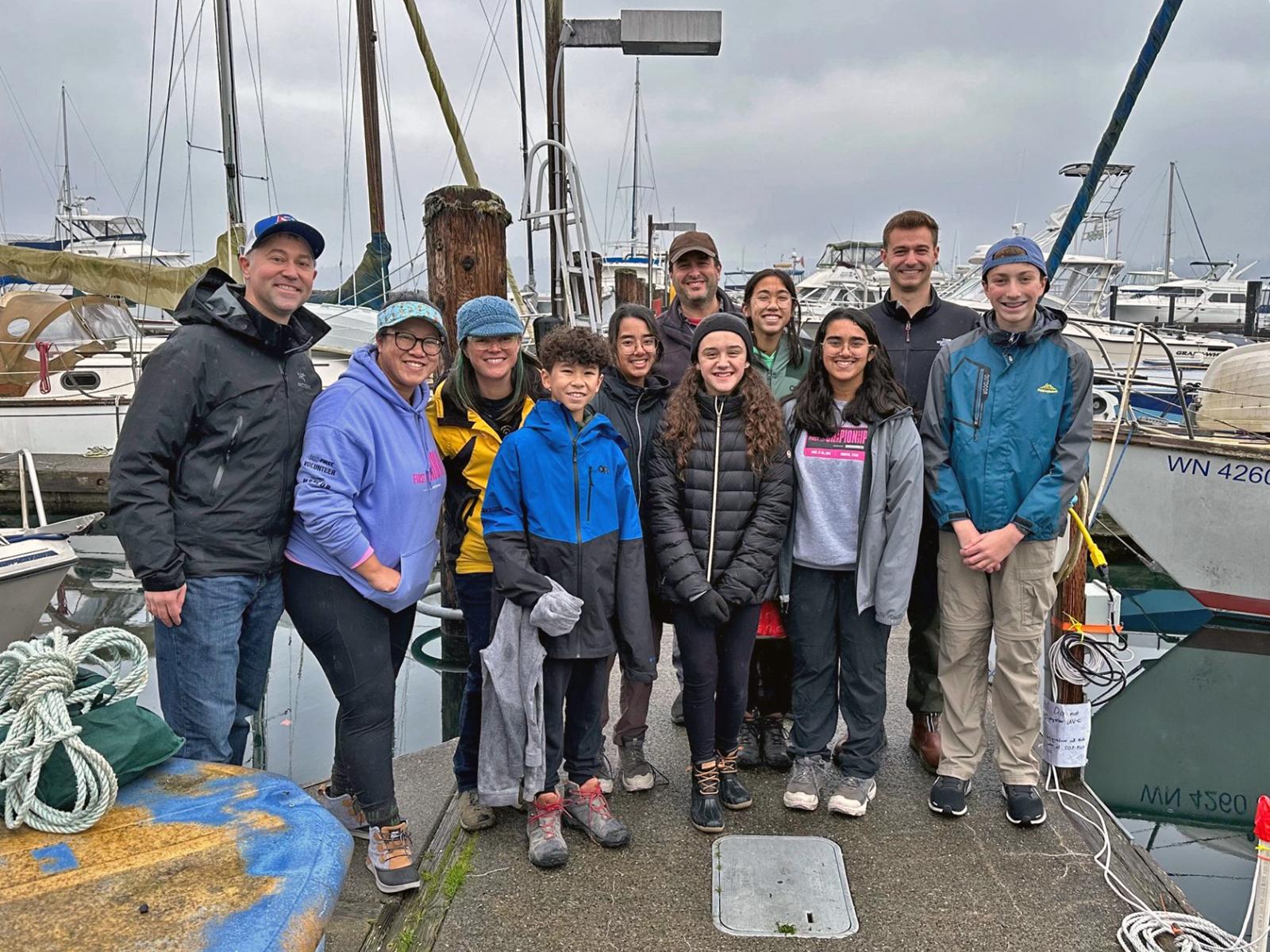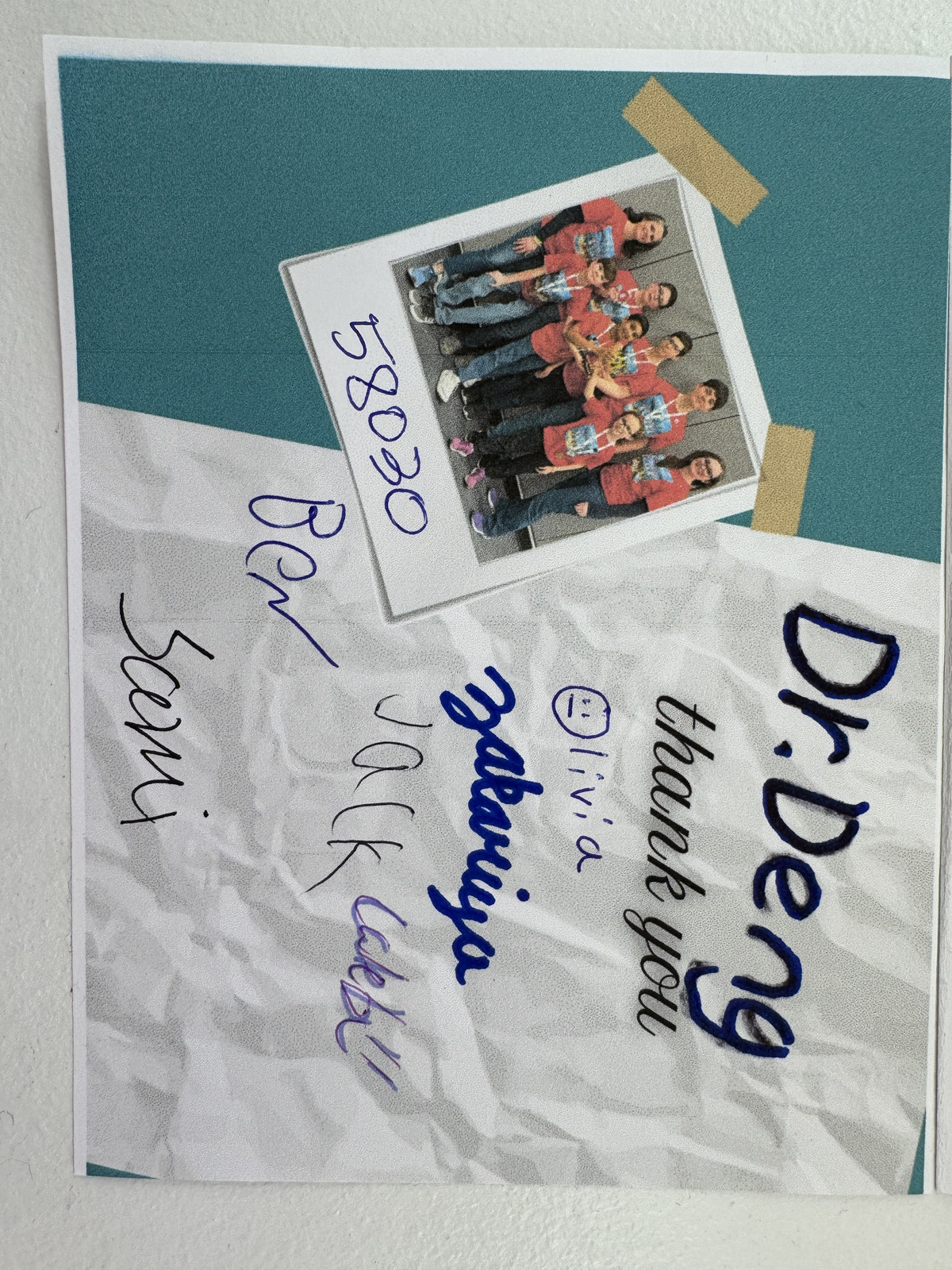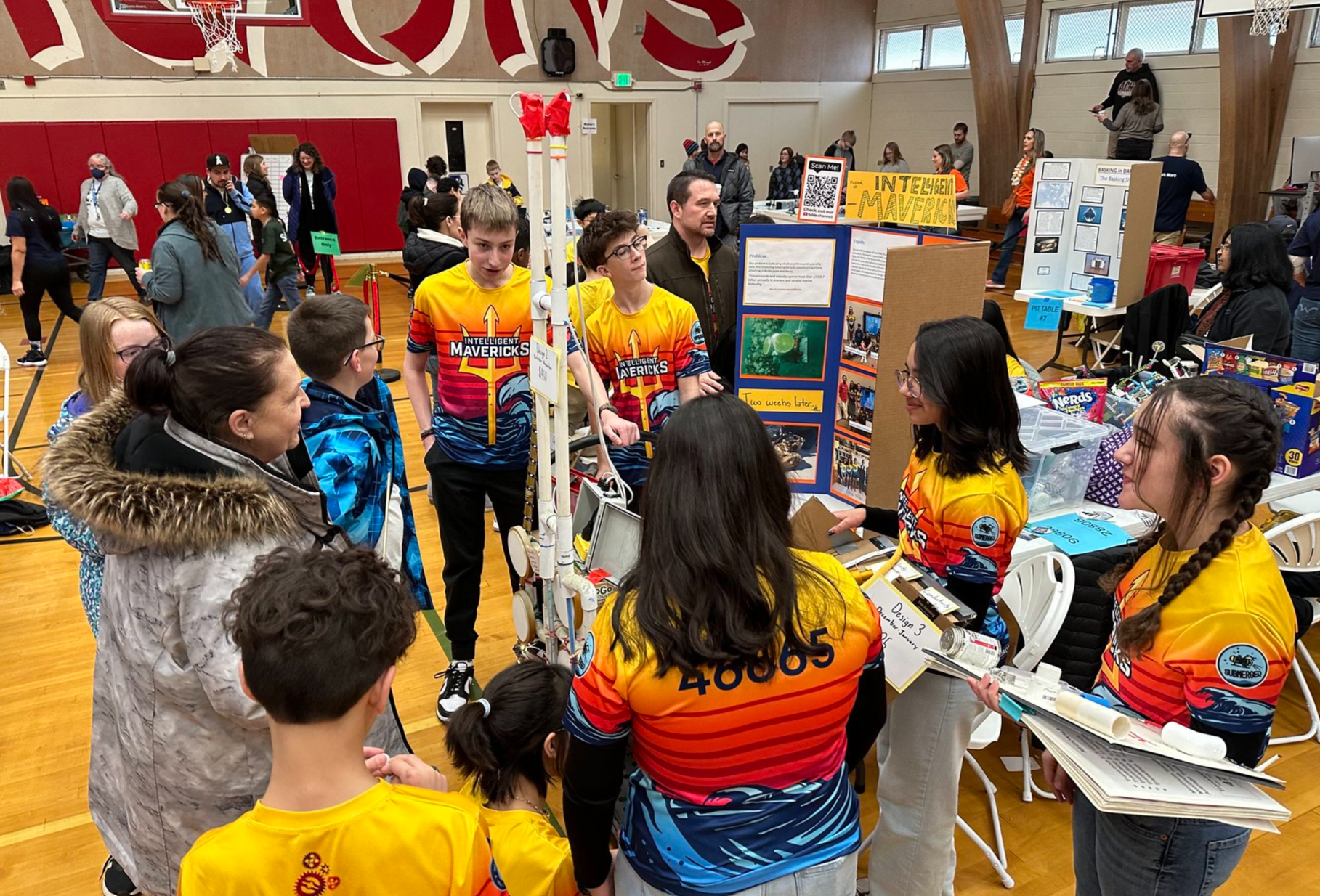Researchers Help Students Design Marine Solutions in Robotics Competitions
Researchers at PNNL shared their expertise with students competing in the FIRST® LEGO® League robotics competitions

The Intelligent Mavericks team alongside marine researchers at PNNL-Sequim to deploy their Epibiosis Preventative Illuminated Contraption to test how it can disrupt and prevent biofouling.
(Photo courtesy of Nick Cramer)
Researchers at Pacific Northwest National Laboratory (PNNL) provided technical expertise to five teams of elementary and middle school students competing in the FIRST® LEGO® League (FLL) competitions, including one team that reached the 2025 World Championship.
This year’s FLL innovation challenge was to identify and research a problem related to ocean exploration. The students asked marine researchers at PNNL about the real-life problems they face when studying the ocean to develop creative solutions and compete in the FLL regional and state competitions. The expertise and feedback from researchers at PNNL helped these teams succeed.
In addition to designing innovative research solutions, teams concurrently built and programmed a robot using LEGO technology to complete various marine-themed missions and tasks on a timed stage.
"It was a truly refreshing and fulfilling experience to work with these bright and passionate future scientists and engineers!” says Daniel Deng, a Lab Fellow at PNNL who advised one of the teams. “The students asked insightful questions, embraced scientific principles, came up with innovative ideas, and integrated them into feasible solutions."
The next generation of researchers

From Maryland, Team 58030, a.k.a. Chickens in a Submarine, reached out with a specific ask in mind: to learn more about micro-acoustic transmitters used for tracking shad and other migratory fish in the Pacific Northwest. The team used this information to design a similar micro-scale sensor for tracking baby sea turtles since current trackers are too large for non-adult sea turtles. They won the Innovation Project Award at their regional qualifier, advancing to the Maryland State competition, where they won the Core Values Award.
One of the teams from California, the SCS Technacolts in Orange County, wanted to design a fish-like robot as a probe to take measurements and collect data while deployed in the ocean. They reached out to researchers at PNNL to learn how they use power-generating buoys at platforms and power supplies for marine scientific instruments. Another California team, the AquaKnots from Kraemer Middle School in Placentia, focused on the issue of power limitations for ocean devices and had the idea to use underwater sea vents as an energy source.
One team from Washington, the Robricks Columbia River Mission Solvers, learned more from researchers at PNNL about marine aquaculture, the cultivation of aquatic organisms in water for food or other commercial purposes, and came up with a toolkit to help kelp farmers map the ocean to identify the best locations for planting kelp.

A second team from Washington, the Intelligent Mavericks, identified biofouling, the unwanted growth and accumulation of organisms on underwater surfaces, which can damage technology and equipment at sea, as their problem to tackle. They developed an underwater ultraviolet-C (UV-C) lighting apparatus to prevent biofouling, dubbed EPIC (Epibiosis Preventative Illuminated Contraption), and were able to deploy it near the PNNL-Sequim campus to test how their lighting system withstands and prevents biofouling. Thanks to feedback from researchers at PNNL and industry experts, the Intelligent Mavericks team developed a new version of their device called EPIC Twist using an updated UV-C light experimental rig.
“I hope the EPIC makes a significant impact on ocean exploration research,” says Lucy Cramer, an eighth grader on the Intelligent Mavericks team. “The valuable support from our experts, John Vavrinec and Erin Walters, and the dedication from our team have been vital in the success of our project.”
At the Eastern Washington regional competition, the Intelligent Mavericks team won 1st place in Robot Performance and the Champion’s Award, thanks to their robot’s design and performance, as well as their work on the innovation project component of the competition.
Competing at the global level
Based on their regional awards, the Intelligent Mavericks qualified to attend the FLL World Festival in Houston, Texas, from April 16th to 19th, 2025. They competed against the top 160 teams in the world to see how their robot and innovation project solution stacked up. And stack up they did! The Intelligent Mavericks’ innovation project earned a perfect score, and by the final robot match, they had hit 535 points, just 10 points shy of their maximum possible score.
The Intelligent Mavericks placed in the top five teams at the World Championship, earning a Champion’s Finalist Award. They were the only team from the United States to win this award in the 2025 competition and the first team from Washington State to ever take home this prize.
Support from researchers at PNNL, including Noelani Boise, Daniel Deng, Molly Grear, Phil Parisi, John Vavrinec, and Erin Walters, was funded by the Department of Energy’s Water Power Technologies Office.
Published: May 28, 2025